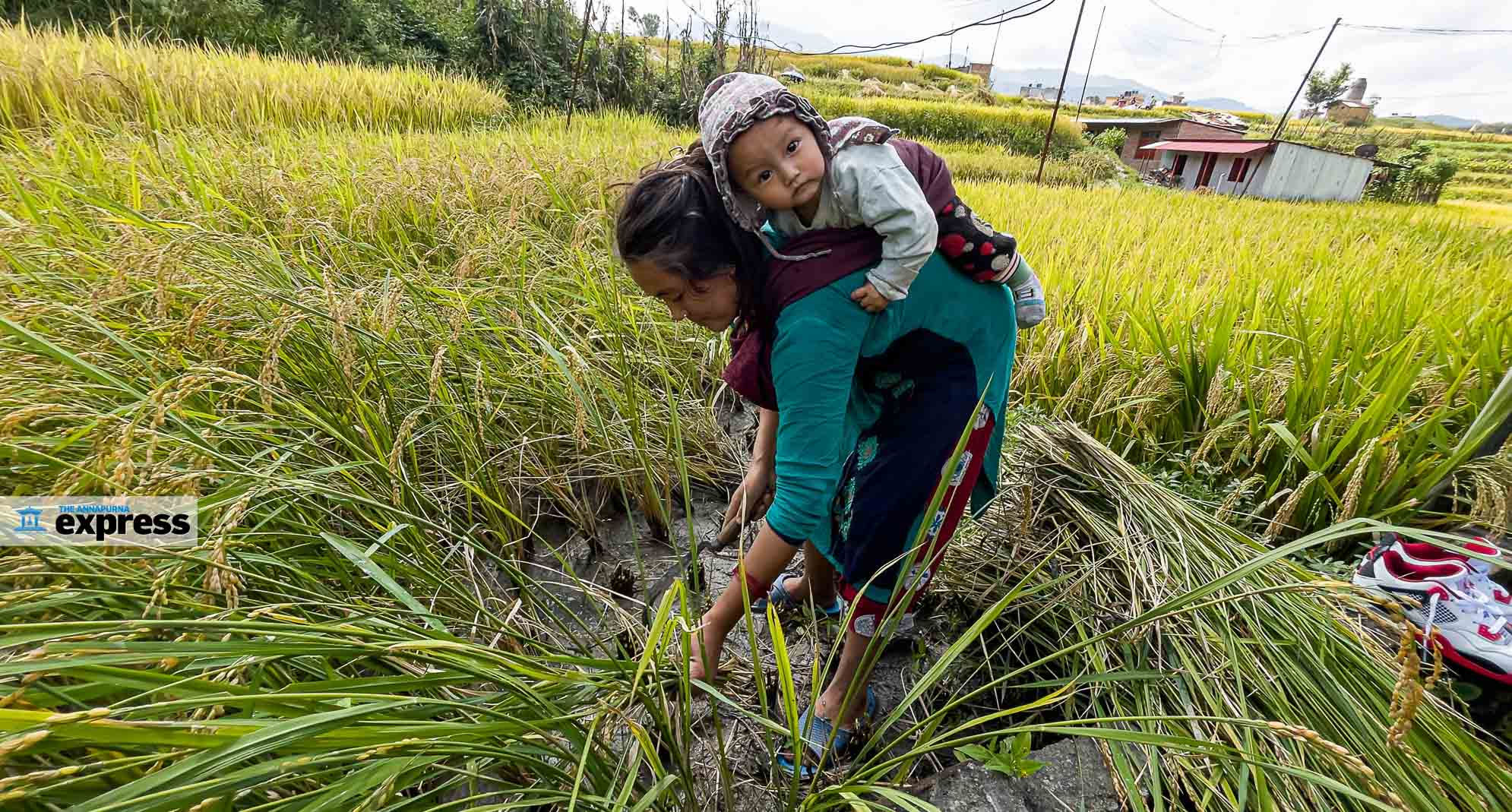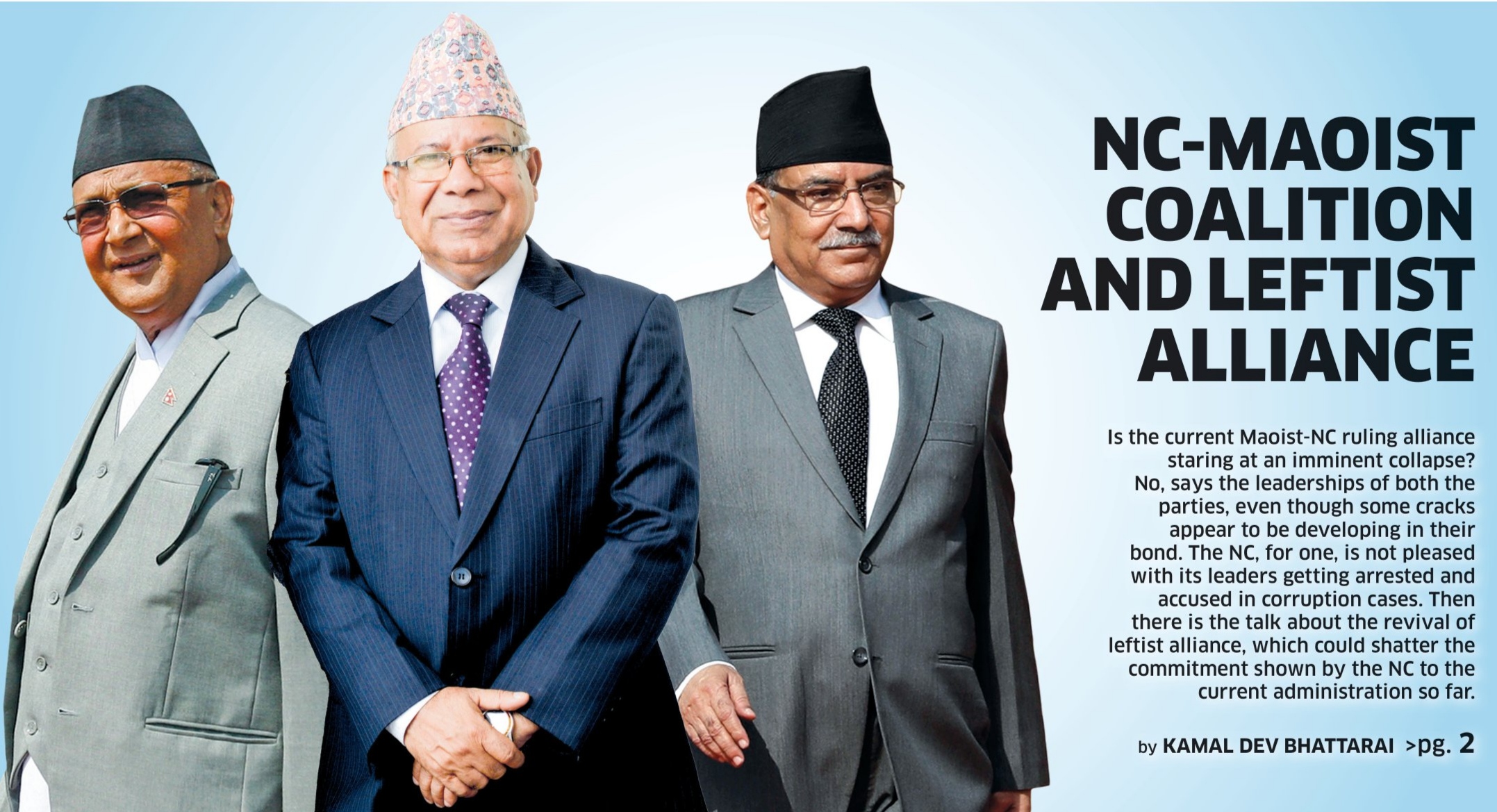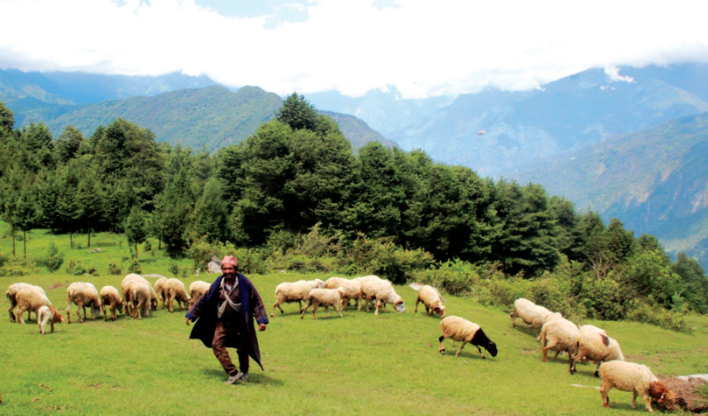Mind Matters | Struggling with sibling issues
I’m a 19-year-old guy with a sibling who is nine years younger than me. If I’m to be very honest, I cannot get along with him at all. I love him but every time we are together all we do is fight. My parents are always scolding me for everything, even when it’s my brother’s fault. I feel unloved. It’s proving to be quite difficult for me to adjust with my family. Sometimes, I just want to run away. But more than that I’m scared of resenting my brother. I don’t want to but the more time I spend with him, the more I start hating him. How do I deal with this feeling? Please help!—An angry brother
 Kapil Sharma, Counseling Psychologist, Nepal Institute of Mental Health
Fights, misunderstandings and blame games are common in siblings. It’s even more normal when there’s a big age-gap between the two. As a 19-year-old, you are psychologically in that stage of life when there is a lot of confusion and conflict. You are creating your own identity and developing your sense of self as well as exploring your role in your relationship with your loved ones. Whereas your brother is in the stage where he is fighting inferiority, that is he learns the sense of competency by doing tasks and feeling inferior if he fails. It’s important to understand that you both have different psychological needs and acknowledging this is the first thing you can do to develop a better bond.
Next, try and understand what causes fights between you two. Is it related to a specific thing or is it regular, daily life concerns? When you figure when and where you fight, then you can work on the why aspect of it, which is the most important. It could be because you feel ignored or your brother doesn’t act according to your expectations. Once you understand the reason behind your problems, you can work on fixing it. It’s important that you two don’t blame or try to mold each other but give each other some space instead.
Then it’s also important to communicate with your parents. They will stop scolding you once they see where you are coming from and how hard you are trying to work things out. In our society, it’s common for elder siblings to get blamed for the mistakes of the younger ones. That doesn’t make it okay but knowing you aren’t in this alone, or being singled out can help you manage your emotions. Perhaps, you can ask your parents what they would do had they been in your shoes? Tell them how you are feeling and ask them to understand you.
A person is never the problem. It’s his/her behavior, related to a specific thing, that’s the issue. Try to detach yourself from the problem and deal with it. It will help you understand others as well as yourself. Ask before you assume, connect before communicating, respond, don’t react, listen, don’t interrupt and try to help, not blame. If you struggle with processing your emotions, you can also visit a psychologist or psychosocial counselors who can help you manage it better.
Kapil Sharma, Counseling Psychologist, Nepal Institute of Mental Health
Fights, misunderstandings and blame games are common in siblings. It’s even more normal when there’s a big age-gap between the two. As a 19-year-old, you are psychologically in that stage of life when there is a lot of confusion and conflict. You are creating your own identity and developing your sense of self as well as exploring your role in your relationship with your loved ones. Whereas your brother is in the stage where he is fighting inferiority, that is he learns the sense of competency by doing tasks and feeling inferior if he fails. It’s important to understand that you both have different psychological needs and acknowledging this is the first thing you can do to develop a better bond.
Next, try and understand what causes fights between you two. Is it related to a specific thing or is it regular, daily life concerns? When you figure when and where you fight, then you can work on the why aspect of it, which is the most important. It could be because you feel ignored or your brother doesn’t act according to your expectations. Once you understand the reason behind your problems, you can work on fixing it. It’s important that you two don’t blame or try to mold each other but give each other some space instead.
Then it’s also important to communicate with your parents. They will stop scolding you once they see where you are coming from and how hard you are trying to work things out. In our society, it’s common for elder siblings to get blamed for the mistakes of the younger ones. That doesn’t make it okay but knowing you aren’t in this alone, or being singled out can help you manage your emotions. Perhaps, you can ask your parents what they would do had they been in your shoes? Tell them how you are feeling and ask them to understand you.
A person is never the problem. It’s his/her behavior, related to a specific thing, that’s the issue. Try to detach yourself from the problem and deal with it. It will help you understand others as well as yourself. Ask before you assume, connect before communicating, respond, don’t react, listen, don’t interrupt and try to help, not blame. If you struggle with processing your emotions, you can also visit a psychologist or psychosocial counselors who can help you manage it better.
Parties disappoint voters again
Balen Shah’s victory in the local elections in May earlier this year gave people a lot of hope. It seemed like the beginning of a much-needed change, said those ApEx spoke to. People wanted good, capable candidates—those who worked in favor of the people, rather than being driven by their biases and agendas. Political parties, they thought, would realize this and nominate worthy names for the federal parliament and provincial assembly elections scheduled for Nov 20. But the names that have been registered at the Election Commission reflect a different truth: It’s the same old faces—those that have been elected and reelected—from which we will have to choose once again. Madhab Maharjan, owner of Mandala Book Point in Jamal, Kathmandu, says he is unhappy with the way things have turned out. “I can stamp the ballot paper randomly as it doesn’t matter who is elected. It’s the same lot anyway and we know how they are,” he says. Nepali politics has always been a closed circle. Politicians favor their own. This, Maharjan points out, has been a trend in our society for eons and is unlikely to change soon. People must vote sensibly—choose the right person, rather than blindly follow a particular party, he says. Bhakti Shah, a transgender activist and member of Blue Diamond Society, says he is upset over the lack of representation of the LGBTIQA+ community in the upcoming elections. “With just nine percent of direct election candidates being women and only one from our community, the nominations paint a bleak picture,” he says. Grishma Ojha, a faculty member at Thames International College, says she has no faith in politics. The inclusive spirit of the constitution hasn’t been honored by the political parties. The required quota for women hasn’t been met and marginalized communities have, once again, been sidelined. Ojha is going to vote as it’s a right she believes she must exercise. But she wishes people had the option of rejecting all the candidates on the ballot paper, as they do in many other democratic countries. “Only then will things change,” she says. Political analyst Indra Adhikari says political parties’ blatant disregard of inclusion in candidate selection is shameful. Worse, she says, they will get away with it as the political nexus is strong. “Our party structure is such that there is no space for fresh faces and unless that changes, little else will,” she says.
‘Sherpa’ book review: An engaging narrative nonfiction
Ten climbers from Nepal paused in the winter of 2021 not far from the peak of K2, the second-highest mountain in the world, which is located in Pakistan. They huddled and moved forward while humming the national anthem of Nepal ‘Sayaun thunga phulka hami.’ The group of elite Nepali climbers led by Nirmal Purja and Mingma G hailed their historic accomplishment as they reached the icy slope of ‘Savage Mountain’ at an altitude of 8611 meters. This was no ordinary feat. It was considered the pinnacle of climbing to complete a winter expedition on K2, one of the most difficult 8000-meter peaks. In fact, it was the only record that remained to be broken. The Nepali climbers, nine of whom were Sherpas, were eager to take home the last trophy. The majority of the K2 summiteers I spoke with in the spring of 2021 said that their expedition was motivated by the fact that the only remaining record to be broken on K2 was a winter climb. “Foreign climbers currently hold the record on these peaks. But the reality is that it’s not possible for them to climb any of these peaks without help from Sherpas,” one of them told me. Mountaineering doesn’t have a very extensive history. It coincided with the decline of the British Empire. In 1856, Peak XV (later known as Everest) was recognized as the highest mountain in the world. Early in the 20th century, European explorers started venturing into the eastern Himalayas. But after the survey of British India proclaimed the mountain to be the tallest in the world, it took climbers more than a century to achieve their goal of reaching the summit of Everest. Having lost its colonies in Asia and Africa, the British Empire was in retreat. Everest offered them the last frontier. A century ago, British explorers started their quest to conquer what is frequently referred to as the Third Pole. The victory over it became a powerful tool for reinvigorating their sense of national pride. For most of the 20th century, the mountain’s major decisions and rope fixing were mostly made by Western climbers. The Western explorers needed labor in the form of porters, cooks, Sirdars, guides. Before Nepal opened up to foreigners after the end of a century of Rana rule in 1951, expeditions were organized in the Indian mountain town of Darjeeling. Sherpas from Khumbu region flocked to Darjeeling for jobs as porters and cooks. Over the decades until the turn of the century, Sherpas became inevitable in mountaineering. Without them, it’s difficult to climb a mountain higher than 8000 meters. Every year, Sherpas carve out a path in the mountains. Hundreds of climbers use the routes they make up, which they construct using ropes and ladders. For a long time, Sherpas have been treated by Western climbers as a mere footnote in their glory. Despite their heroics, bravery, and skills, it’s the western climber who gets all the attention. The Sherpas are frequently portrayed as faceless people, an insignificant cog in the multi- billion-dollar Everest machine. However, they have recently proven that they are the real heroes and master of mountaineering. How did this community of potato farmers and yak herders who lived beneath the tallest mountains on Earth, become accomplished mountaineers? How do they survive in the harsh, remote terrain that is prone to landslides and other natural disasters? Nepali journalists Pradeep Bashyal and Ankit Babu Adhikari trace the rise of Sherpas in their nonfiction narrative “Sherpa: Stories of Life and Death from the Forgotten Guardians of Everest.” The book features a wide variety of characters, from Tenzing Norgay to Kancha Sherpa, who was a member of the 1953 expedition but was unable to reach the planet’s highest point. There’s Mingma David Sherpa, a brave climber from Taplejung district, who originally intended to travel to Darjeeling, but ended up in Kathmandu (He was a member of the record-setting K2 expedition of 2021). The book also shines light on Sherpas who are not always in the limelight—There’s Phurba Tashi Sherpa, who summited Everest for 21 times, but gave up mountaineering after the death of his parents (although he had always told them that he hadn’t hiked up base camp). Then there is the tale of two women who made it to the summit of Everest after their spouses passed away. For me, Kushang Dorjee’s profile was the most captivating read. The dramatic plot twists and turns make the story read like a novel. Kushang traveled to the mountain country of Bhutan before returning to Darjeeling, where he fell in love with a woman and married her. It has all the makings of a fantastic plot, and the authors craft a compelling story out of it. It’s difficult to write narrative nonfiction. You must hone your narrative skills. You must choose the appropriate characters. To take the readers to the heart of the story, you must travel. Above all, it requires time and effort. The authors have carefully selected the characters for each chapter so that they can tell a mélange of mountain stories. They travel to all three valleys in eastern Nepal—Makalu, Rolwaling and Khumbu—to meet their subjects. The authors let their subjects share their stories at their own pace. On the road, they linger to get all the subtleties. In evocative passages, we learn about the evolution of Sherpas as elite climbers and the culture of these valleys Sherpa people call home. The result is an engaging work of storytelling that adds to the body of work on Everest, which already includes Wade Davis’ ‘Into the Silence’ and Jon Krakauer’s ‘Into Thin Air’. Sherpa is a must-read for those curious about the growing industry of mountaineering and the people who are at the center of it. SHERPA: Stories of Life and Death from the Forgotten Guardians of Everest Pradeep Bashyal & Ankit Babu Adhikari Publisher: Octopus Publishing/Hachette, UK Pages: 321, Paperback Deepak Adhikari covered mountaineering for international news agencies including AFP, DPA. He is currently the editor of NepalCheck.Org, a fact-checking platform
What Xi’s third term means for Nepal?
Chinese President Xi Jinping is expected to clinch power for a third consecutive term this week. On October 16, hundreds of party delegates—provincial representatives, top military brass, and representation from farmers and minority communities—will assemble in the Great Hall of China to endorse Xi. The gathering will also pick new faces who shall dictate China’s military, economy, and foreign policies. Over the past decade, China has become more assertive, projecting itself as a superpower. So what can Nepal expect from five more years of Xi? Since he took office in 2013, like everywhere, China adopted an aggressive policy towards Nepal, particularly to counter Western influence. In 2019, Xi visited Nepal to elevate comprehensive bilateral ties into a “strategic” one. He pledged to transform Nepal from a “land-locked country to a land-linked country”. Since Xi’s trip, China has been pressing Nepal to implement the agreement reached between the two countries. Pramod Jaiswal, who follows China’s South Asia policy, says Xi is one of the few Chinese presidents to visit Nepal so he places a high priority on Nepal. “Xi sees Nepal as a gateway to South Asia,” says Jaiswal. “He views South Asia as a very important region to materialize his pet project, the Belt and Road Initiative. I believe that he is going to further deepen ties with Nepal during this third term.” Soon after taking charge as the president of China in 2013, Xi stressed peripheral diplomacy. Doing well in peripheral diplomatic work, he said at the time, was necessary for China to achieve the "Two Centuries" objective and realize the great rejuvenation of Chinese nation. In the final days of this second term, Xi dispatched his senior colleagues to Nepal to keep tabs on the Western influence in Kathmandu. With growing tensions between Beijing and Washington over numerous issues, including the human rights issues of the Tibetan community, Xi’s China is likely to adopt a more aggressive approach to protect its security interest. Beijing is already pushing its new campaigns, such as Global Security Initiatives and Global Development Initiatives, which has put Kathmandu in a precarious position. Upendra Gautam, general secretary at China Study Center, says China’s key priorities are security and development. “Nepal can take a lot of economic benefits, but we do not have any clear vision on our engagement with China. We could not even take advantage of what Xi had pledged during his Nepal visit in 2019,” says Gautam. “The main problem is we are unable to take independent decisions when dealing with major powers.” He adds Nepal seldom does enough homework to identify its needs to present them before China. “Nepal should pursue an independent foreign policy. Geopolitical pressures and concerns are always there, but we can handle those issues with right vision and leadership.”



















